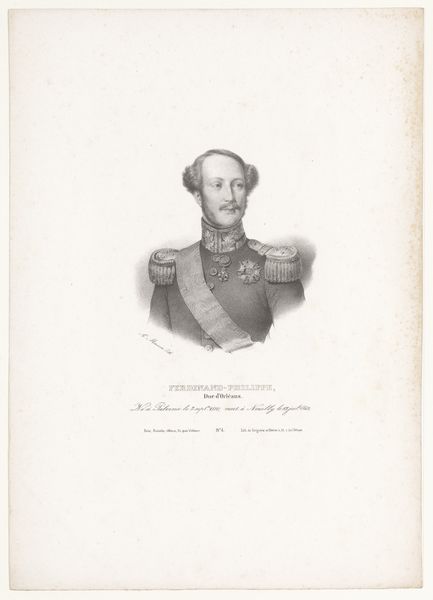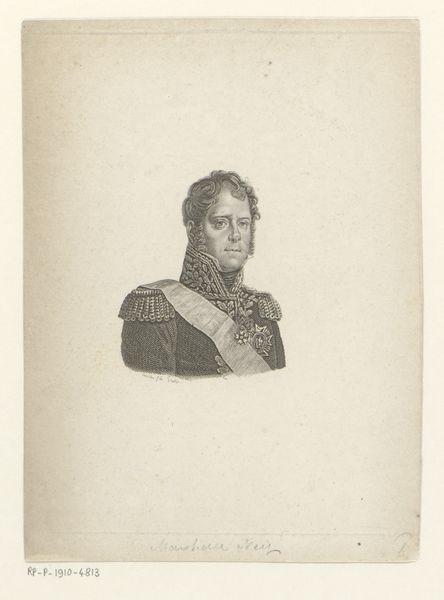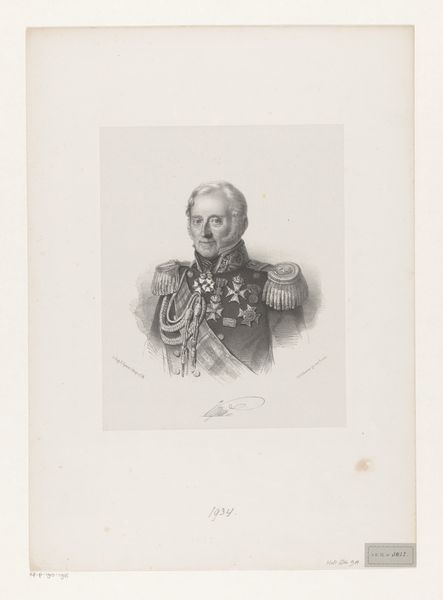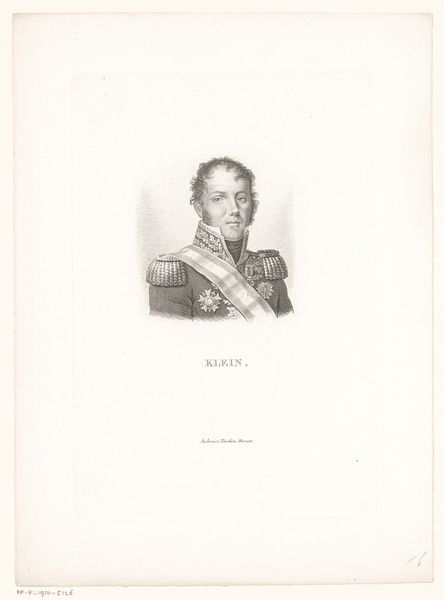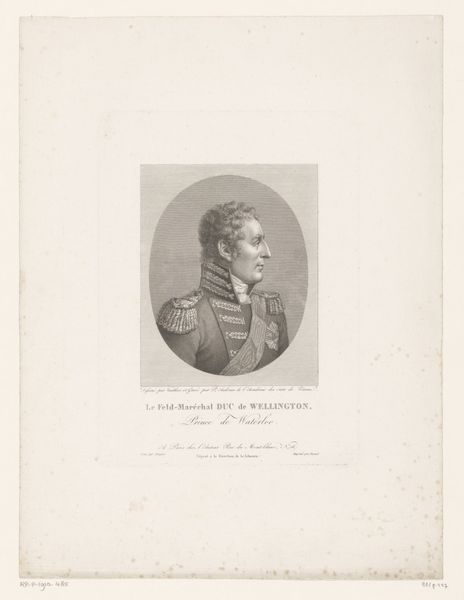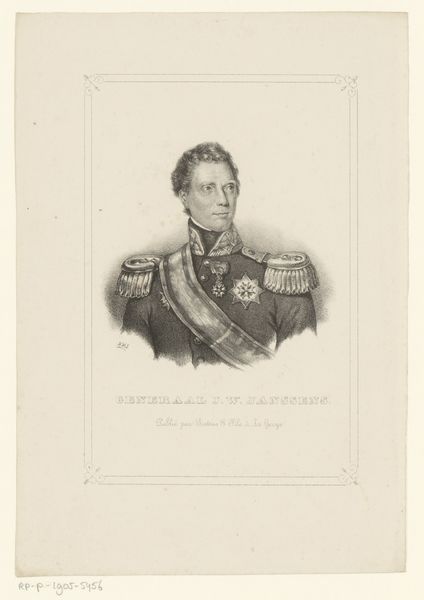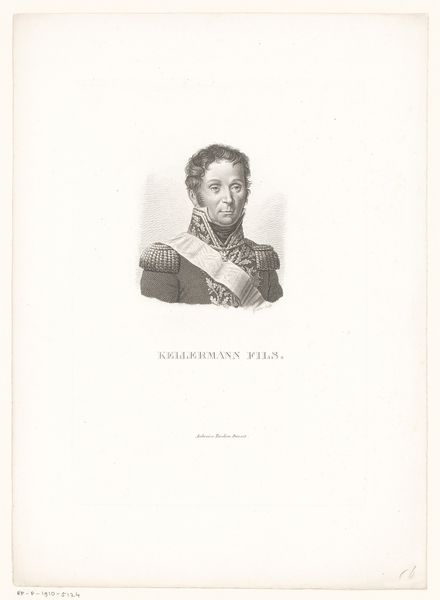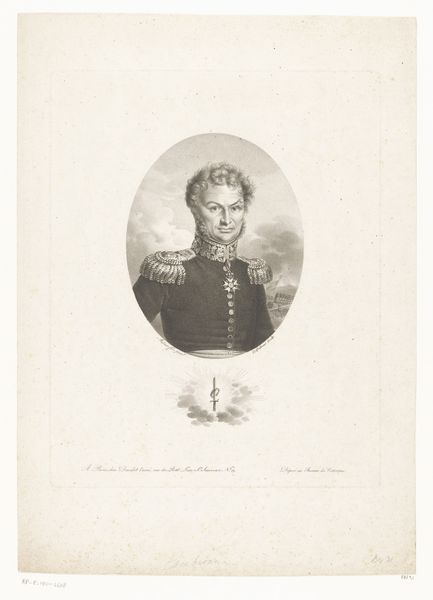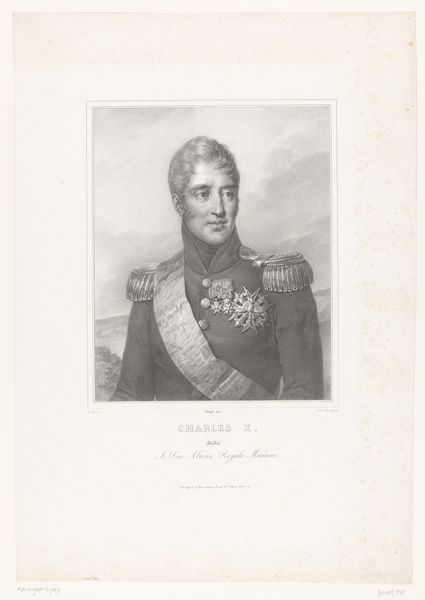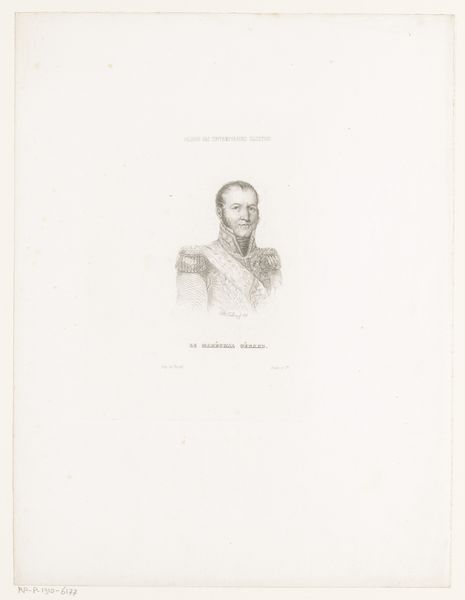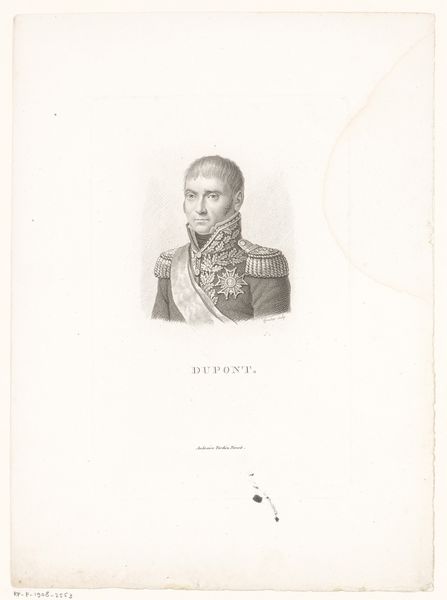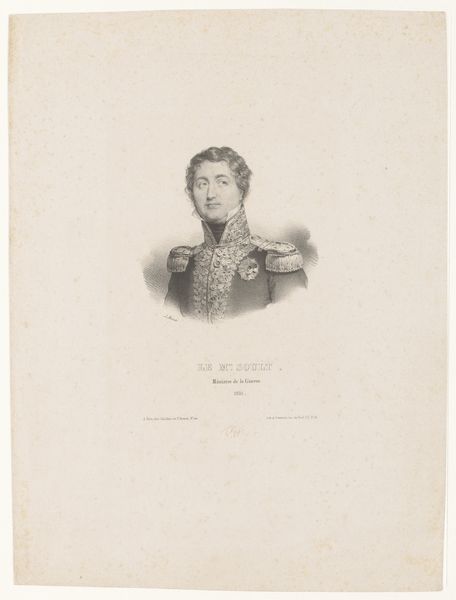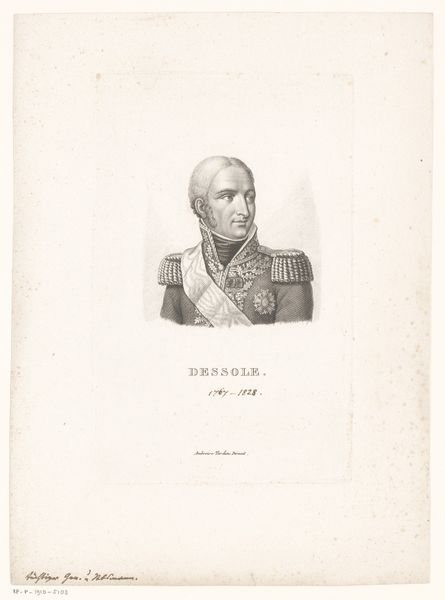
print, engraving
#
portrait
#
neoclacissism
# print
#
pencil drawing
#
history-painting
#
engraving
Dimensions: height 210 mm, width 138 mm
Copyright: Rijks Museum: Open Domain
This print, portraying Michel Ney, was made by Charles Aimé Forestier, using a technique called etching. It’s a printmaking process that relies on acid to create the design in a metal plate. In etching, a metal plate is coated with a waxy, acid-resistant substance. The artist then scratches an image into this coating, exposing the metal beneath. When the plate is dipped in acid, the exposed metal is eaten away, creating lines. The longer the plate is exposed to the acid, the deeper and darker the lines will be. The plate is then inked, and the ink held in these etched lines transfers to paper when pressed, creating the final print. The result is a finely detailed image, with a delicate quality. The process allowed Forestier to capture the details of Ney's military attire and conveys a sense of formality and status. Etching was a popular method for creating portraits during this period, as it allowed for relatively easy reproduction and dissemination of images. Considering the social context, the print allowed for wider distribution of Ney's likeness, contributing to the construction of his public image and legacy.
Comments
No comments
Be the first to comment and join the conversation on the ultimate creative platform.
